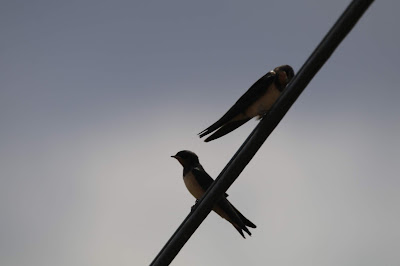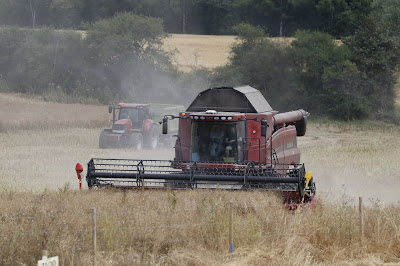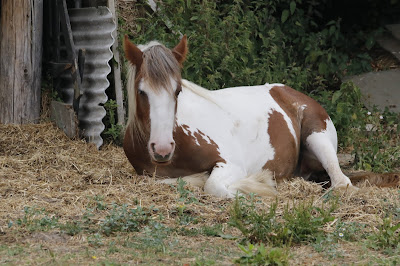A juvenile ROBIN, all browns at this time in its life.
As in every year June moves into July, the breeding season winds down and birds start thinking about migration. This month has been a scorcher, with temperatures regularly hitting thirty degrees, and with no sign of any rain, everything has been burned. Despite some early starts, birds have been difficult to find let alone photograph.
LINNETS are still fairly common on the patch with birds starting to form small flocks after a successful breeding season.
LESSER BLACK BEACKED GULLS often wander aimlessly over the fields.
SWALLOWS nest in the local farm buildings, they can often been seen flying over the Suffolk Punch Field and the Reservoir.
GREENFINCHES have successfully nested on the patch this year. Once a common bird their numbers have crashed due to a pestilence in their species.
Surprisingly BULLFINCHES have been more noticeable this month with birds seen on several days despite being missing for a large chunk of the year before. This must be local birds passing through, the first signs of Autumn. Unfortunately I didn't see any young birds.
BLACKBIRDS are common breeders on the patch, nesting in every hedgerow and area of scrub.
A combine harvester cutting the wheat in Lark's Field mid-July
A large part of the countryside of the Patch is given over to horse grazed meadows. This one is taking a well earned snooze in the scorching sun.
A big influx of CANADA GEESE on the pond, an unusual sight at this time of year.
This REDPOLL COW took offence at me hanging around taking photos.
The stream - a glorified ditch - dried up for the first time I have visited the patch in six years.












No comments:
Post a Comment